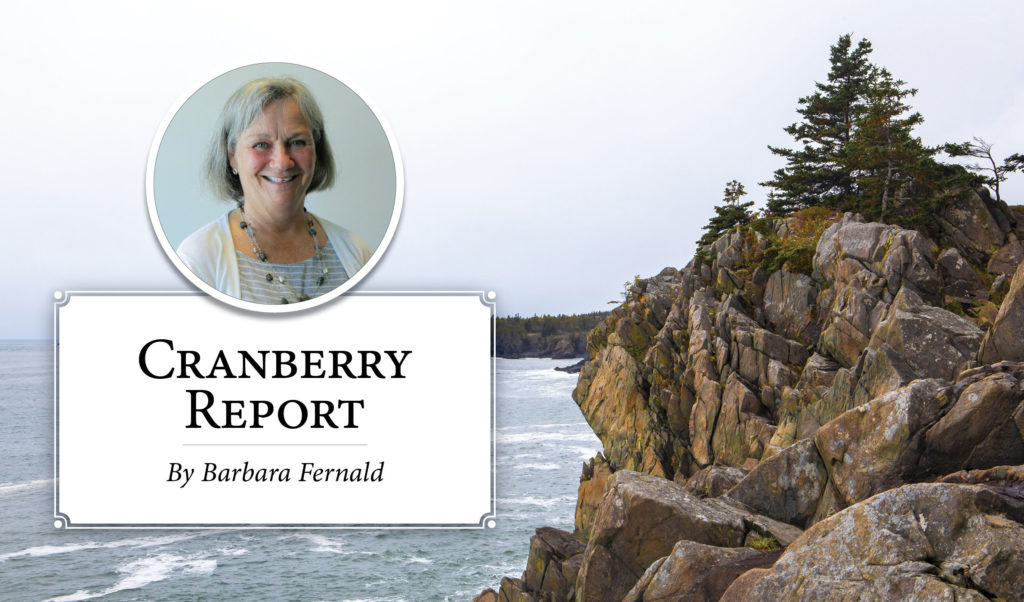By Barbara Fernald
Activity on the islands, at the end of February and into March, is like a mirror image of the action at the end of August into September. Just as the summer residents of the Cranberry Isles end their vacations right before fall, many year-round residents end their winter breaks just before the spring equinox.
It’s time to get back to work and reconnect.
Our annual town meeting takes place on the second Saturday in March. For selectmen and town employees, winter has been anything but a vacation. They have been working steadily, gathering information to write the warrant for town meeting. It’s the time of year we come together as a town to decide on projects and spending and how much money is to be raised by property taxes.
Discussion of the school budget alone can take well over an hour. The islands take turns hosting the meeting and the luncheon. This year, town meeting will take place on Islesford. What’s for lunch? Homemade pizzas, salads, and desserts. Life gets busier as we volunteer to help prepare the first community meal of the season.
Town meeting is a great opportunity to hear about winter from friends and neighbors. “How was your trip to …?” “Who knew grand-parenting was so exhausting or that there were so many cold germs involved?” “You did all that painting?” These same questions could be asked in September at a school board meeting in a large suburb. (Preferably not during the meeting while someone else has the floor!)
In January and February, Bruce and I got to spend a lot of time with our grandchildren in Southern Maine. Visiting them was the main goal of most of our winter travel. We considered trying to paint our kitchen, but we kept catching odd coughing viruses and experienced more down time than we wanted, so we never got to it. Maybe I’ll paint it in May, when I can have the windows open.
Bruce saw more than enough paint, anyway, this winter. During his “time off” he painted 600 buoys (white and bright red with a black stripe) and, like every other lobster fisherman in Maine this winter, he read about, talked about, and experimented with purple paint.
The latest whale regulations require all Maine lobster fishermen to use new markings on the ropes they attach to lobster traps. Depending on how close to shore they fish, they will have to add 2-4 purple marks on each buoy line. On warps that are 100-feet or less there must be one 12-inch purple mark within a few fathoms of the trap and a 36-inch purple mark within 2 fathoms of the buoy. If the warp is longer that 100 feet, the requirement is for a 12-inch purple mark near the trap, a second 12-inch purple mark halfway to the buoy, and a 36-inch mark near the buoy.
Bruce figures he will be putting 1,500 to 1,800 markings on his rope in all; two to three weeks of extra work if he does it without hiring help. A number of fishermen are applying paint to their ropes by resting them in 3-foot long gutters made from lengthwise-halved PVC pipe. Bruce’s first attempt was with spray paint but he soon moved on to the more efficient brush and latex paint.
Some fishermen will add a 3-foot piece of purple rope to the end of the buoy line or toggle, but all attachments must be made with a splice or a tuck.
I know it’s a stretch to compare following Maine whale rope requirements with a plein air workshop, but a person could return home from either and say that they’d been painting in their spare time. If Bruce were writing an essay on how he spent his winter vacation, painting would be a part of it. Another part would be the description I heard him tell his brother Mark about walking to get doughnuts, in February, with our son Robin, and our grandchildren Henry and Cora. I was away with friends in Portland, and Stephanie was away with friends in Florida. Father and son were in charge.
“Yeah, we got doughnuts at The Cookie Jar and then walked to the beach for a picnic and to throw rocks.” Eating homemade donuts and throwing rocks at the beach—if that isn’t a mirror image of many childhood summers on Islesford, I don’t know what is.
Barbara Fernald lives on Islesford (Little Cranberry Island) with her husband Bruce.





